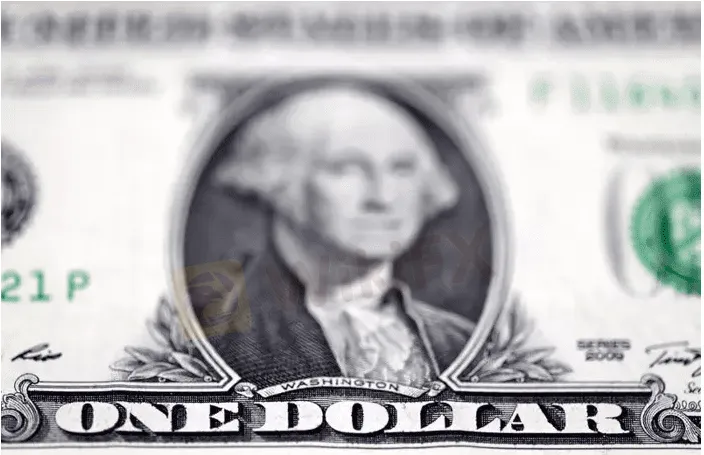简体中文
繁體中文
English
Pусский
日本語
ภาษาไทย
Tiếng Việt
Bahasa Indonesia
Español
हिन्दी
Filippiiniläinen
Français
Deutsch
Português
Türkçe
한국어
العربية
Dollar steadies as investors heed hawkish reminder from New Zealand
Abstract:The dollar nursed its biggest losses for years on Wednesday, after a dovish central bank surprise in Australia had investors wondering whether a peak is in sight for global interest rates.

The dollar steadied on Wednesday after a sharp rate rise in New Zealand poured cold water over hopes for a pause or slowdown in the U.S. Federal Reserves intentions for aggressive hikes.
The dollar had suffered its heaviest setback in more than two years on Tuesday but was back on the front foot after the Reserve Bank of New Zealand (RBNZ) delivered a fifth consecutive 50 basis point (bp) hike.
Even the New Zealand dollar was only boosted briefly. The kiwi leapt as much as 1.3% before falling back to barely above flat at $0.5741. The euro fell 0.2% to $0.9970. Sterlings rally paused as it fell 0.3% to $1.1449.
The RBNZ move and tone contrasted with the Reserve Bank of Australias surprisingly small 25 bp hike a day earlier, which had seemingly stoked hopes that the U.S. Federal Reserve may also slow hikes and fuelled dollar selling.
“Just as RBA‘s smaller-than-expected hike yesterday added to trimming of hawkish Fed bets, RBNZ’s hawkish signalling could remind markets that fighting inflation is still priority for many central banks,” said Maybank analyst Saktiandi Supaat.
“A more synchronous dovish tilt among major central banks on growth fears might be premature.”
The dollar index, down about 4% since hitting a record high of 114.78 last week, steadied at 110.30. The yen held at 144.06 per dollar and the Australian dollar fell 0.2% to $0.6488.
Demand for the safe haven dollar had fallen in recent days as the mood in global markets improved on speculation Britains new finance minister Kwasi Kwarteng, having rowed back on a proposed tax break for high earners, could make further adjustments to a mini-budget that had sent bond and currency markets into a tailspin last week.
Having recovered nearly 11% from week-ago record lows, sterlings rally seems to be running out of steam, dealers said.
Analysts have been cautious about how much has really changed about Britain‘s fiscal outlook and how broad Australia’s rates signal really was, leaving the dollars dip open to reversal.
U.S. Federal Reserve Governor Philip Jefferson reiterated overnight that inflation was policymakers top target and that growth would suffer in efforts to bring it down.
U.S. labour data due on Friday will be the next major indicator of the likely trajectory of U.S. rates.

Disclaimer:
The views in this article only represent the author's personal views, and do not constitute investment advice on this platform. This platform does not guarantee the accuracy, completeness and timeliness of the information in the article, and will not be liable for any loss caused by the use of or reliance on the information in the article.
Read more

The Daily Habits of a Profitable Trader
Every professional trader follows a structured approach to ensure they are well-prepared, disciplined, and able to seize opportunities with confidence. Whether you are a seasoned investor or an aspiring trader, adhering to a robust daily checklist can significantly enhance your performance. Use this checklist to check if you are a qualified trader

The Impact of Interest Rate Decisions on the Forex Market
Interest rate changes determine currency attractiveness, influencing capital flows and exchange rate trends. Understanding this mechanism helps investors navigate the forex market effectively.

How a Housewife Lost RM288,235 in a Facebook Investment Scam
A 47-year-old housewife in Malaysia recently fell victim to an online investment scam, losing a substantial sum of RM288,235 after engaging with a fraudulent scheme advertised on Facebook.

A Trader’s Worst Mistake: Overlooking Broker Reviews Could Cost You Everything
In today’s digital age, reviews influence nearly every decision we make. When purchasing a smartphone, television, or home appliance, we pore over customer feedback and expert opinions to ensure we’re making the right choice. So why is it that, when it comes to choosing an online broker where real money and financial security are at stake many traders neglect the crucial step of reading reviews?
WikiFX Broker
Latest News
The Withdrawal Trap: How Scam Brokers Lure Victims into Paying More
FCA to Investors: Think Twice Before Trusting These Brokers
Trump\s tariffs: How could they affect the UK and your money
Trump gambles it all on global tariffs he\s wanted for decades
TradingView Brings Live Market Charts to Telegram Users with New Mini App
Trump tariffs: How will India navigate a world on the brink of a trade war?
Interactive Brokers Launches Forecast Contracts in Canada for Market Predictions
Authorities Alert: MAS Impersonation Scam Hits Singapore
Stocks fall again as Trump tariff jitters continue
IG Group Acquires Freetrade for £160M to Expand UK Investment Market
Currency Calculator







